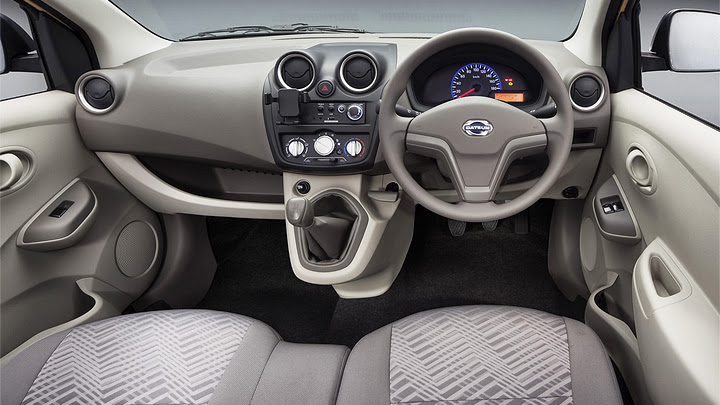
Despite the intention of focusing mostly on the biggest emergent markets, Datsun’s operations will start with a strategy which is somewhat hard to comprehend. Go was released as exclusive for India, while its MPV variation now arrives only in Indonesia. The global website indicates it’ll reach Russia and South Africa at some point, and it was already confirmed that Brazil will also be included, but selling each car in only one country doesn’t seem too profitable, specially for a low-cost company. Perhaps they will be taken to the others if their sales turn out good enough. Meanwhile, it’s time to meet the second vehicle of Datsun’s new “incarnation”.
Unlike Fiat 500L’s, Go+’s additional name letter means it’s just a new version of the original car. Although the first looks label it as a regular minivan, the main difference from Go is the 21-cm longer rear overhang – which would actually classify it as a station wagon. The low-cost concept was applied once again in the entire vehicle, which shares absolutely everything until the rear doors with the hatchback. In other words, the Indonesian MPV repeats a set of lines and volumes which manages to look nice without reaching high construction costs: the set of lines and volumes escapes from looking simple and plain through a very well-sculpted light-and-shadow play.







Besides, the complete absence of items such as chrome accents anticipates a concept which will be completely corresponded if you enter Go+. The interior isn’t ugly, but doesn’t make the smallest concession to emotional aspects. The front seats repeat Go’s both at the interesting additional space between them, created by placing the gearshift lever closer to the console, and at the bad idea of embedding back and headrests into one piece – it’s much cheaper to produce, but taller occupants may have trouble setting a comfortable position. The second-row seats’ situation is even worse because their headrests are shorter, but speaking of occupants is what reveals this car’s most important feature: the sixth and seventh seats.
Datsun’s intention with Go+ is to offer a very cheap option for bigger families. This is why this minivan simply doesn’t worry with having attractive design or sophisticated construction, but looking at the interior shows there wasn’t big concerns even with habitability: while Chevrolet Spin at least tries to take seven adults, it was already established that Go+ is a 5+2 seater: like in 2+2 sports cars, this expression means the number of officially allowed “adults + children”. And this is what “explains” these seats as they are: the 1.63-m width forces them to be wide enough only for children and to be accessed only by folding the second row. Not to mention the front row’s short headrests become much better than leaning the head at the rear windshield…







Nevertheless, Go+ is still a nice option for travelling with many people without spending too much. Like it was seen on the hatchback, the MPV’s equipment list’s “luxuries” won’t go further than climate control, multimedia sound system, power steering and power windows, besides the good-looking three-tone coating. When it comes to safety, it’ll probably bring ABS brakes and front airbags. And once again like the hatchback, talking about the powertrain will always mean a gasoline four-cylinder 1.2L engine, paired to a manual five-speed transmission. This minivan will also be produced in the Indonesian city of Purwakarta.